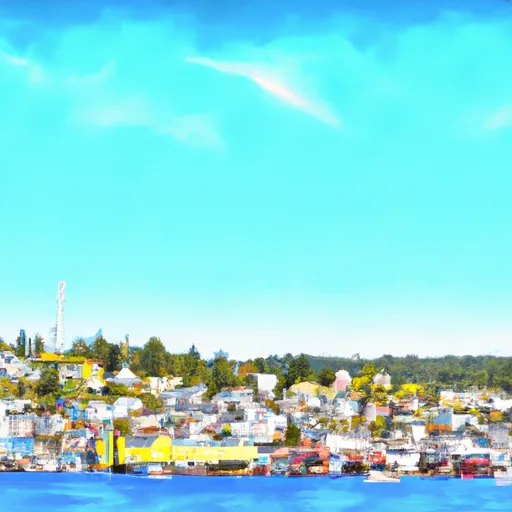-
 Snoflo Premium
Snoflo Premium
Get unlimited access to all our content
With no Ad interruptions! - Start Your Free Trial Login with existing account
Lopez
Eden Index
Climate
7.6
•
Recreation
4.6
•
Community
2.8
•
Safeguard
5.4/10

Lopez Island is one of the San Juan Islands located in the northwestern part of Washington state. Known for its serene and idyllic setting, this island offers a moderate marine climate throughout the year. Summers are typically mild and dry, with average temperatures ranging from the mid-60s to mid-70s Fahrenheit. Winters are cool and moist, averaging temperatures in the 40s to 50s.
The hydrology constituents of Lopez Island are predominantly influenced by its surrounding marine environment. The island is characterized by several lakes, wetlands, and streams, with Fisherman Bay being the largest body of water. These hydrological features provide ample opportunities for boating, fishing, and wildlife observation.
Outdoor recreation on Lopez Island is plentiful. The island boasts numerous parks, trails, and beaches, making it an ideal destination for hiking, biking, and picnicking. Spencer Spit State Park offers stunning views, camping facilities, and a sandy beach for swimming. Agate Beach County Park is another popular spot for beachcombing and birdwatching. For those interested in water activities, kayaking and paddleboarding are popular pastimes, allowing visitors to explore the island's picturesque coastline.
In summary, Lopez Island offers a mild marine climate, diverse hydrology constituents, and a range of outdoor recreation opportunities, making it a captivating destination for nature lovers and outdoor enthusiasts.
What is the Eden Index?
The Snoflo Eden Index serves as a comprehensive rating system for regions, evaluating their desirability through a holistic assessment of climate health, outdoor recreation opportunities, and natural disaster risk, acknowledging the profound impact of these factors on livability and well-being.
Climate Health Indicator (CHI): 7.6
Lopez receives approximately
565mm of rain per year,
with humidity levels near 82%
and air temperatures averaging around
10°C.
Lopez has a plant hardyness factor of
8, meaning
plants and agriculture in this region tend to thrive here all year round.
By considering the ideal temperature range, reliable water supplies, clean air, and stable seasonal rain or snowpacks, the Climate Health Indicator (CHI) underscores the significance of a healthy climate as the foundation for quality living.
A healthy climate is paramount for ensuring a high quality of life and livability in a region, fostering both physical well-being and environmental harmony. This can be characterized by ideal temperatures, reliable access to water supplies, clean air, and consistent seasonal rain or snowpacks.
Weather Forecast
Streamflow Conditions
Puget Sound
Area Rivers
Puget Sound
Snowpack Depths
Puget Sound
Reservoir Storage Capacity
Puget Sound
Groundwater Levels
Recreational Opportunity Index (ROI): 4.6
The Recreational Opportunity Index (ROI) recognizes the value of outdoor recreational options, such as parks, hiking trails, camping sites, and fishing spots, while acknowledging that climate plays a pivotal role in ensuring the comfort and consistency of these experiences.
Access to outdoor recreational opportunities, encompassing activities such as parks, hiking, camping, and fishing, is crucial for overall well-being, and the climate plays a pivotal role in enabling and enhancing these experiences, ensuring that individuals can engage in nature-based activities comfortably and consistently.
Camping Areas
| Campground | Campsites | Reservations | Toilets | Showers | Elevation |
|---|---|---|---|---|---|
| Beach - Fort Worden State Park | None | 15 ft | |||
| Fort Flagler State Park | None | 100 ft | |||
| Jefferson County Fairgrounds | 80 | 17 ft | |||
| Fort Casey State Park | 35 | 11 ft | |||
| Upper Forest - Fort Worden State Park | 30 | 54 ft | |||
| Fort Worden State Park | 80 | 173 ft |
Nearby Ski Areas
Catastrophe Safeguard Index (CSI):
The Catastrophe Safeguard Index (CSI) recognizes that natural disaster risk, encompassing floods, fires, hurricanes, and tornadoes, can drastically affect safety and the overall appeal of an area.
The level of natural disaster risk in a region significantly affects safety and the overall livability, with climate change amplifying these risks by potentially increasing the frequency and intensity of events like floods, fires, hurricanes, and tornadoes, thereby posing substantial challenges to community resilience and well-being.
Community Resilience Indicator (CRI): 2.8
The Community Resilience Indicator (CRI) recognizes that education, healthcare, and socioeconomics are crucial to the well-being of a region. The CRI acknowledges the profound impact of these elements on residents' overall quality of life. By evaluating educational resources, healthcare accessibility, and economic inclusivity, the index captures the essential aspects that contribute to a thriving community, fostering resident satisfaction, equity, and social cohesion.

